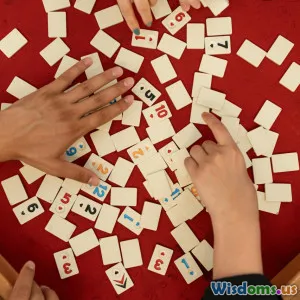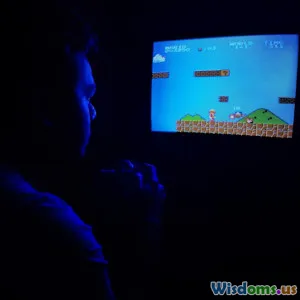
Building a Community Around Indie Games
7 min read Discover effective strategies to build passionate communities around indie games and boost engagement. (0 Reviews)
Building a Community Around Indie Games
Introduction
In today’s ever-evolving landscape of entertainment and gaming, the rise of indie games has reshaped players’ experiences and industry dynamics. Unlike mainstream blockbusters, indie games often rely heavily on a dedicated community to thrive. But building a community isn’t just about attracting players — it’s about cultivating a passionate, loyal audience that advocates for your game and breathes life into it well beyond launch day.
Why is community so crucial for indie developers? Simply put, it can mean the difference between obscurity and success. Indie games like Stardew Valley and Undertale grew from small projects into cultural phenomena, largely due to their devoted fan bases. But how do developers foster such organic engagement? This article explores actionable approaches, real-world examples, and the deep value of nurturing communities around indie games.
Understanding the Indie Game Community Landscape
The Unique Appeal of Indie Games
Indie games tend to offer innovation, personal storytelling, and niche experiences that mainstream titles might overlook. This uniqueness naturally invites players who seek authenticity and connection, setting fertile ground for communities.
According to a 2021 survey by the International Game Developers Association, nearly 60% of indie developers ranked "community engagement" as integral to their game’s long-term success. Players appreciate not just the content but the culture around the game — the forums, streaming channels, fan art, and modding scenes that emerge.
What Defines a Strong Community?
A robust gaming community embodies:
- Active Participation: Consistent interaction through forums, Discord servers, or social media.
- Shared Values: A collective passion that resonates with the game's themes or mechanics.
- Support Networks: Players helping each other with tips, encouragement, or fan creations.
- Player Influence: Community feedback integrated into game updates fosters ownership.
Ownership through inclusion increases community longevity and strengthens attachment to the game.
Strategies for Building Your Indie Game Community
1. Start Early: Engage During Development
Transparency fosters trust. Early access programs or open development diaries engage players while the game is evolving.
Example: Studio MDHR’s Cuphead regularly shared hand-drawn animations and development challenges on social media, generating excitement and emotional investment long before release.
By involving fans early, you not only create buzz but collect valuable feedback that shapes gameplay.
2. Choose Communication Platforms Wisely
Discord has become the hub for gaming communities, enabling real-time chats, events, and developer interaction. Other platforms like Reddit, Steam Community, and Twitter offer channels for discussion and promotion.
Example: The game Hades by Supergiant Games leverages a strong Discord presence where developers chat with players, discuss lore, and announce updates directly, fostering an approachable atmosphere.
3. Create Meaningful Content and Events
Hosting livestreams, Q&A sessions, and contests drives interaction. Creative challenges, like fan art competitions or speedrun events, mobilize the community.
Research by Twitch shows that 83% of viewers watch streams to connect with communities, not just the gameplay.
4. Empower User-Generated Content
Allowing modding and fan creations enriches the game world and encourages long-term engagement.
Example: Minecraft, while not strictly indie, exemplifies this principle through thriving mod communities that continually expand its impact decades after launch.
Providing official tools or tutorial support minimizes barriers for creators.
5. Listen and Iterate
Respond constructively to player feedback. Publicly acknowledging suggestions and communicating changes makes players feel valued.
The indie game Celeste regularly updated players about adjustments based on community input, reinforcing trust.
6. Focus on Inclusivity and Positivity
A welcoming culture nurtures healthy growth. Setting clear community guidelines and active moderation prevents toxic behavior that can dampen engagement.
Real-World Insights and Success Stories
Stardew Valley’s Backyard Farming Phenomenon
Eric Barone, the solo developer behind Stardew Valley, actively engaged with players on Reddit and his official forums. He took player insights seriously, adding features inspired by community suggestions.
The result: a vibrant, cross-generational player base that remains engaged years after the game’s debut in 2016.
Indies and Social Media Synergy
Indie studios often harness platforms like TikTok or Twitter for viral moments. For instance, Among Us exploded in popularity partly due to creative streamer communities and meme culture, illustrating how social engagement propels indie game visibility.
Metrics Indicating Community Health
Looking at Steam reviews and forum activity can gauge active engagement. Games with high user engagement often display a positive correlation with sustained sales and DLC uptake.
Conclusion
Building a community around an indie game goes far beyond marketing—it is about fostering genuine connections that evolve alongside the game. By engaging early, choosing the right platforms, creating interactive experiences, empowering creativity, listening attentively, and maintaining positivity, developers transform players into lifelong ambassadors.
As indie games continue redefining narratives and gameplay experiences, the communities behind them are indispensable allies in the journey to enduring success. For developers ready to commit to these practices, the payoff is not only financial viability but a meaningful legacy within the world of gaming.
Start today: invite players into your story, listen to their voices, and build your indie game’s vibrant community.
Rate the Post
User Reviews
Popular Posts



















